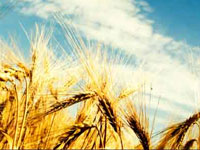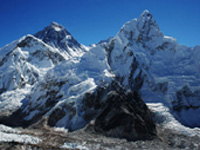Nigeria annual flood outlook 2024
The 2024 Flood Outlook report offers a comprehensive assessment of flood risk across the country, highlighting critical areas of concern and strategic recommendations for mitigation and preparedness. Through
The 2024 Flood Outlook report offers a comprehensive assessment of flood risk across the country, highlighting critical areas of concern and strategic recommendations for mitigation and preparedness. Through
<p>The tropical cyclone Dineo made landfall over southern Mozambique on 15 February 2017. It weakened to a remnant low on 17 February, which hit Botswana on the same day and triggered heavy rainfall that
<p>When the social, economic, or ecological conditions under which socio-ecological systems are expected to adapt become untenable, a system may transform into a fundamentally new system. Within agricultural
<p>Future projections of precipitation at regional scales are vital to inform climate change adaptation activities. Therefore, is it important to quantify projected changes and associated uncertainty,

AHMEDABAD: Climate change will severely affect Rajkot – and by extension central Saurashtra – by the end of the century, predicts a research paper by Gujarat-based officials of the India Meteorological

UTTARKASHI: For those planning a trek or climb in the Garhwal Himalayas, a not-so-good news. Snowfall in the months of May and June — a possible fallout of changing climate patterns in the higher reaches
<p>Western disturbances (WDs) are upper-level synoptic-scale systems embedded in the subtropical westerly jet stream (STWJ), often associated with extreme rainfall events in north India and Pakistan during
As the Earth’s atmosphere warms, the atmospheric circulation changes. These changes vary by region and time of year, but there is evidence that anthropogenic warming causes a general weakening of summertime
<p>This paper presents an example of usage of Ensemble Weather Forecast for the control of Satellite-based Communication Systems. Satellite communication systems become increasingly sensitive to weather
<p>The Cretaceous greenhouse climate was accompanied by major changes in Earth’s hydrological cycle, but seasonally resolved hydroclimatic reconstructions for this anomalously warm period are rare.
<p>The Old World farming system arose in the semi-arid Mediterranean environments of southwest Asia. Pioneer farmers settling the interior of the Balkans by the early sixth millennium BC were among the